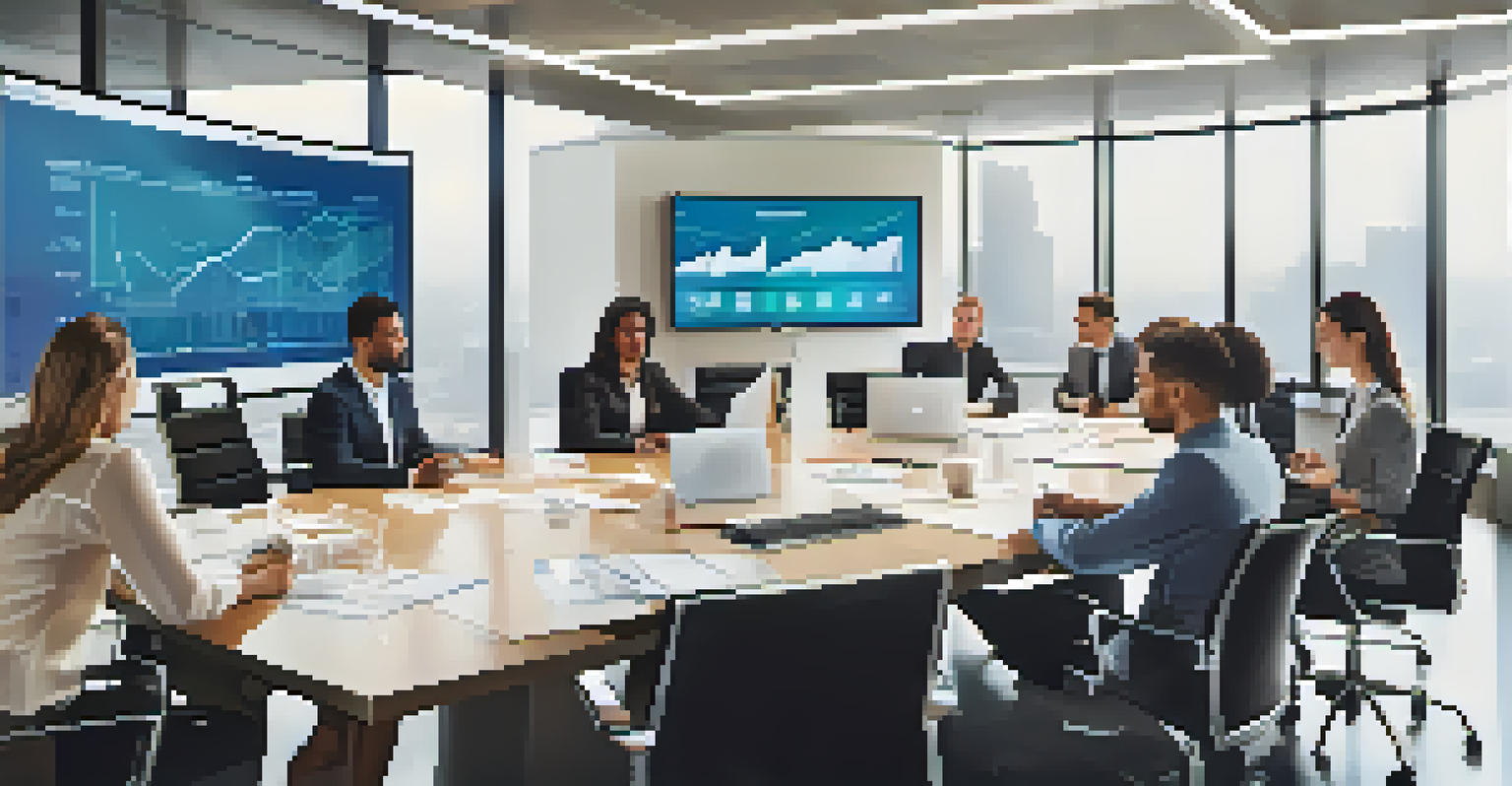Monitoring Risks: Continuous Oversight for Better Outcomes

Understanding the Importance of Risk Monitoring
Risk monitoring is like keeping an eye on the weather while planning a picnic. Just as a sudden storm can ruin your day, unforeseen risks can derail projects if not addressed promptly. By continuously monitoring risks, organizations can anticipate potential issues before they escalate.
In the middle of difficulty lies opportunity.
This proactive approach not only helps in safeguarding projects but also contributes to overall strategic planning. Imagine steering a ship: constant vigilance allows you to adjust your course to avoid hazards that could sink your journey. In the business world, this translates to making informed decisions that align with your goals.
Ultimately, effective risk monitoring fosters a culture of transparency and resilience. Teams become more adaptable, responding swiftly to changes in their environment. This agility can be the difference between success and failure in today's fast-paced market.
Key Components of a Risk Monitoring Framework
Creating a solid risk monitoring framework is like building a strong foundation for a house. Without it, everything can crumble at the first sign of trouble. Key components include risk identification, assessment, response planning, and continuous review.

Think of risk identification as a treasure hunt; you need to know what you're looking for before you can find it. Once risks are identified, assessing their impact helps prioritize which ones to address first. This structured approach ensures that resources are allocated efficiently, focusing on the most critical threats.
Risk Monitoring Enhances Project Success
Consistent risk monitoring allows organizations to identify and address potential issues early, safeguarding project outcomes.
Finally, continuous review acts as a safety net, catching new risks as they emerge and adjusting the response plan accordingly. This cyclical process keeps organizations agile and ready for anything that may come their way, ultimately leading to better outcomes.
The Role of Technology in Risk Monitoring
In today's digital age, technology plays a crucial role in effective risk monitoring. Imagine having a high-tech weather station that provides real-time data; similarly, advanced software tools can offer insights into potential risks. By leveraging technology, organizations can automate monitoring processes and enhance accuracy.
Risk management is not just about avoiding risks, but about seizing opportunities.
Data analytics is one of the most powerful tools in this arsenal. By analyzing historical data, organizations can identify trends and predict possible future risks. This not only saves time but also enables teams to make proactive decisions based on data-driven insights rather than guesswork.
Additionally, collaboration tools facilitate communication among team members, ensuring that everyone is informed and engaged in the risk monitoring process. When technology and teamwork come together, organizations can create a robust risk management environment that promotes better outcomes.
Establishing a Continuous Risk Oversight Culture
Building a culture of continuous risk oversight is akin to nurturing a garden. It requires consistent attention and care to flourish. This culture encourages open communication, where team members feel comfortable discussing risks without fear of repercussion.
Regular training and workshops can help instill this mindset across the organization. Just like gardeners learn about different plants and pests, employees can be educated on identifying and managing risks. This knowledge empowers them to take ownership of their roles in risk management.
Technology Boosts Risk Management
Leveraging technology, such as data analytics and collaboration tools, streamlines risk monitoring processes and improves decision-making.
Moreover, leadership plays a pivotal role in fostering this culture. When leaders prioritize risk oversight and model proactive behavior, it sets a powerful example for the entire team. This alignment between leadership and team members can lead to a more resilient organization.
The Benefits of Proactive Risk Monitoring
Proactive risk monitoring brings a host of benefits that can significantly enhance organizational success. Think of it as a seatbelt in a car; it might not prevent accidents, but it certainly minimizes the impact. By identifying risks early, organizations can implement mitigation strategies that reduce potential losses.
Another key advantage is improved decision-making. With a clear understanding of risks, leaders can make informed choices that align with the organization's strategic objectives. This clarity helps avoid costly mistakes and ensures resources are utilized effectively.
Additionally, proactive monitoring fosters customer trust and satisfaction. When clients see that an organization is diligent about managing risks, they are more likely to feel secure in their partnerships. This trust can lead to long-term relationships and increased loyalty, driving overall success.
Measuring the Effectiveness of Risk Monitoring
Measuring the effectiveness of risk monitoring is essential to ensure that efforts yield tangible results. It's similar to tracking your fitness progress; you need metrics to see how far you've come. Key performance indicators (KPIs) can be established to evaluate the impact of risk management initiatives.
For example, organizations can track the number of identified risks versus those that materialized or measure the time taken to respond to risks. These metrics provide valuable insights into the efficiency of the risk monitoring process. If certain areas show consistent weaknesses, it may be time to reassess strategies.
Proactive Culture Drives Resilience
Fostering a culture of continuous risk oversight empowers teams to engage openly in risk management, enhancing organizational resilience.
Moreover, gathering feedback from team members can provide qualitative data on the effectiveness of risk management practices. This holistic approach to measurement ensures that organizations remain agile and responsive, continually refining their risk monitoring efforts for better outcomes.
Future Trends in Risk Monitoring Practices
As we look to the future, several trends are shaping the landscape of risk monitoring practices. One of the most significant trends is the increasing reliance on artificial intelligence (AI) and machine learning. These technologies can analyze vast amounts of data at lightning speed, identifying potential risks that humans may overlook.
Additionally, the integration of risk monitoring with overall business strategy is becoming more pronounced. Organizations are recognizing that risk is not just a separate function but an integral part of their strategic planning. This holistic approach ensures that risk considerations are embedded in every decision-making process.

Finally, the emphasis on sustainability and ethical considerations is growing. Organizations are now more aware of their social and environmental responsibilities, which influence their risk monitoring frameworks. By incorporating these factors, companies can ensure they are not only managing risks effectively but also contributing positively to society.